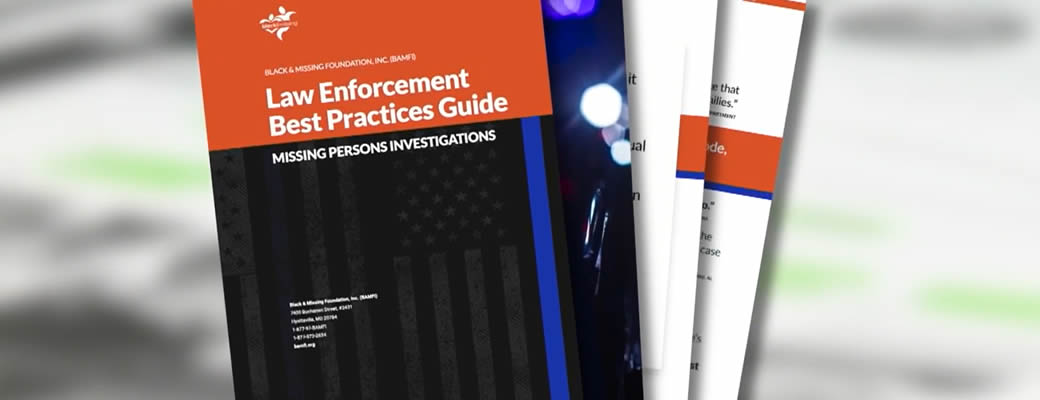Black and Missing Foundation shares ‘best practices’ guide for missing persons investigations
WTKR
Jessica Larché
September 4, 2024
Kathryn Bene Griffin has been missing from Portsmouth since 2012.
“It’s been rough,” said Linda Archie, Griffin’s mother, during our conversation last year. “I wish she was here with us.”
Sharon Ivy Jones has been missing from Norfolk since 2002.
“It’s just like a piece of you is gone and missing,” said Thelma Jones, Sharon’s mother. “It’s just a lot of unknowns.”
Janice Laneau Wright has been missing from Suffolk since 1993.
“What about my mom? She was somebody too,” said Alexander Young, the youngest of Wright’s four children. “I wouldn’t want this to happen to anybody else, where their loved one [goes] missing, and you hear nothing about it.”
These three Black women from Hampton Roads are a fraction of the disproportionate number of Black people that remain missing in America. It is a grim trend the Black and Missing Foundation is working to mend.
“Law enforcement is your first point of contact [for missing persons cases], and you want them to approach your case with care,” said Derrica Wilson, the co-founder of the Black and Missing Foundation.
Wilson, who spent more the two decades as a law enforcement officer in Northern Virginia, co-founded the Black and Missing Foundation with her sister-in-law Natalie Wilson to bring awareness to missing people of color—a group of people reported missing at a disproportionate rate in America. Data reveals Black people have traditionally received less attention and coverage from law enforcement and journalism organizations— something News 3 has been working to address for years.
“I’ve seen firsthand how so many [missing persons] cases are often ignored,” said Derrica Wilson in an interview with me this week. “I’ve also seen that there’s a lack of training when it comes to how to handle missing persons cases.”
“The community can’t help you find anyone if they’re not aware that someone is missing,” she continued. “Families just want someone to follow through. They want them to take their cases seriously.”
This summer, the foundation released the “Law Enforcement Best Practices Guide for Missing Persons Investigations”, a resource that’s “designed to support law enforcement agencies nationwide and refine their investigative strategies in missing persons cases, with a particular emphasis on addressing the critical issue of racial disparities that disproportionately affect minority communities.”
The guide, which is free to download on the foundation’s website, offers guidance for law enforcement agencies to approach cases with urgency and empathy.
For example, the guide used the case of missing law student Jordan Taylor to highlight how wording and photo choices in a flyer can create a perception of a missing person.
“It appeared he was criminalized,” said Wilson of the initial flyer created by a law enforcement agency for Taylor. “It looks like he’s wanted and not a missing person.”
Wilson and the foundation created a new flyer, and they offer a free template for law enforcement and families to create their own.
Additionally, the guide encourages law enforcement to end the use of the term “runaway” when describing missing children.
“There’s this perception that whatever happens to that child, because they decided to run away, they brought it on themselves,” said Wilson. “They’re endangered, they’re missing, and we need to look for them.”
The guide also highlights missing persons alerts available to law enforcement, including the Ashanti Alert. The alert for missing and endangered adults is named for Ashanti Billie, the 19-year-old Virginia Beach woman who was abducted from her job in Norfolk in 2017 and later found murdered in North Carolina.
I spoke with Ashanti’s mother last month about the national rollout of the alert.
“This is all because of her,” said mother Brandy Billie-Moore. “[My daughter] represents everyone’s sister, brother, mother, father, uncle, best friend who may go missing.”
The foundation’s guide also urges law enforcement agencies to abandon the 24-hour waiting period to report someone missing, which is not the case in Virginia. Wilson hopes other agencies will follow Virginia’s lead.
“It really takes all of us. It’s law enforcement, it’s the media, and it’s the community to help us find us,” Wilson said.
I reached out to police departments in the seven cities of Hampton Roads to learn if they were aware of the guide and if they planned on implementing any of its recommendations. Police department spokespersons in Chesapeake, Norfolk and Virginia Beach said they would make leadership aware and follow up with us.
As of this report, Wilson said several agencies in Northern Virginia downloaded the guide. Wilson said the foundation is also available to provide training to law enforcement agencies.
Photo credit: WTKR and Black and Missing Foundation

